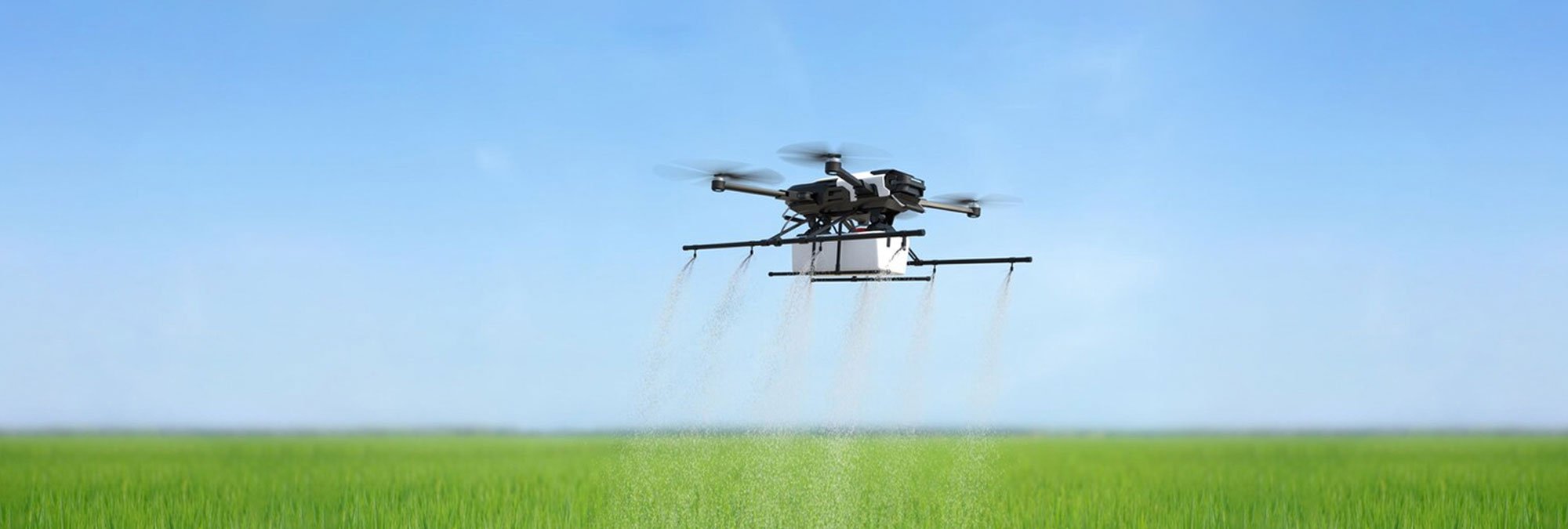Agricultural drones, also known as unmanned aerial vehicles (UAVs), are transforming modern farming practices by providing farmers with innovative tools to maximise their yields.
This article explores the role of agricultural drones in increasing agricultural productivity and the various benefits they offer to farmers.
Benefits of Agricultural Drones in Maximising Yields
1. Precision Farming:
Agricultural drones enable precision farming practices, allowing farmers to monitor and manage their crops with unprecedented accuracy. Drones equipped with advanced sensors can collect data on crop health, moisture levels, and nutrient deficiencies, enabling farmers to make informed decisions about irrigation, fertilisation, and pest control.
2. Increased Efficiency:
Drones can cover large areas of farmland quickly and efficiently, providing farmers with timely information about their crops. This increased efficiency allows farmers to respond quickly to changes in crop conditions and make necessary adjustments to maximise yields.
3. Cost-effectiveness:
While the initial investment in agricultural drones can be significant, they can lead to long-term cost savings. By optimising input use and reducing waste, drones can help farmers improve their bottom line and maximise their yields.
4. Environmental Benefits:
Agricultural drones can help reduce the environmental impact of farming by enabling more precise application of inputs such as fertilisers and pesticides. This targeted approach minimises chemical runoff and soil erosion, leading to healthier ecosystems.
How Agricultural Drones Work
Agricultural drones are equipped with various sensors and imaging devices that allow them to collect data about crop health, soil conditions, and other factors. These drones can be programmed to fly over fields autonomously, collecting data that is then analysed to provide insights into crop health and management practices.
Types of Agricultural Drones
There are several types of agricultural drones available, each with its own set of features and capabilities. Fixed-wing drones are ideal for covering large areas of farmland quickly, while multi-rotor drones are more manoeuvrable and can hover in place for detailed inspections.
Hybrid drones combine the best features of both types, offering both long-range flight and manoeuvrability.
Applications of Agricultural Drones in Maximising Yields
1. Crop Monitoring and Management:
Agricultural drones can provide real-time data on crop health, allowing farmers to detect issues such as pest infestations or nutrient deficiencies early. This information enables farmers to take timely action to protect their crops and maximise yields.
2. Soil Analysis and Mapping:
Drones can assess soil health and create detailed maps of fields, helping farmers make informed decisions about fertilisation and irrigation.
3. Irrigation Management:
Drones can monitor soil moisture levels and apply water only where it is needed, reducing water waste and ensuring optimal soil moisture levels for crop growth.
4. Pest and Disease Detection:
Agricultural drones can be used to detect pests and diseases in crops. By identifying these issues early, farmers can take targeted action to prevent the spread of pests and diseases and minimise crop damage.
Selecting the Right Agricultural Drone
When selecting an agricultural drone, farmers should consider factors such as the size of their farm, the type of crops they grow, and their budget. They should also consider the type of sensors they need, as different sensors are suitable for different types of crops and applications.
Regulations and Safety Guidelines for Agricultural Drones
Before using agricultural drones, farmers should be aware of and comply with regulations governing their use. These regulations vary by country and may include restrictions on where and when drones can be flown, as well as requirements for pilot certification and insurance.
Safety guidelines for flying agricultural drones include maintaining line of sight with the drone, avoiding flying over people or animals, and ensuring that the drone is in good working order before each flight.
Future Trends in Agricultural Drone Technology
The future of agricultural drone technology looks promising, with advancements in technology continuing to improve their capabilities. Future trends in agricultural drone technology include the use of artificial intelligence (AI) to analyse drone data and provide farmers with actionable insights.
Other potential future applications of drones in maximising yields include the use of drones for crop spraying, planting, and even harvesting.
Final Thoughts
Agricultural drones are changing the game in maximising yields, enabling farmers to gather detailed, up-to-date information about their crops and fields. By understanding how these drones work and their benefits, farmers can make informed decisions about how to integrate this technology into their operations.
With the right approach, agricultural drones can help farmers maximise their yields and achieve greater success in modern agriculture.
Precision Ag Services is a local family run business based within the Lockyer Valley and serves South East Queensland and beyond. Depending on what is needed Precision Ag Services is here to help you.
Please fill out our enquiry form for more information or to make a booking.


